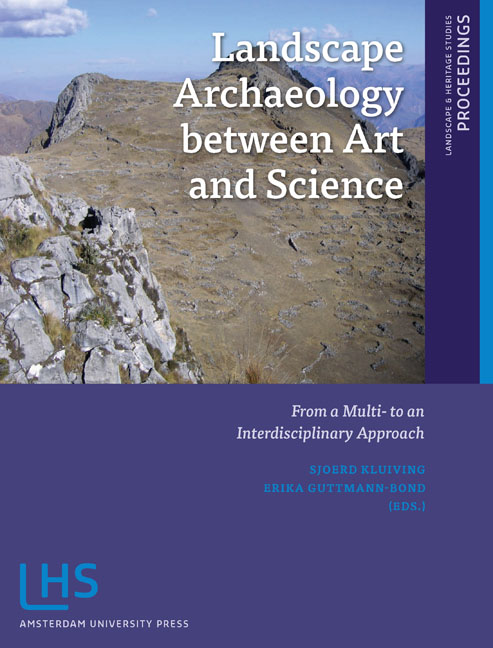Book contents
- Frontmatter
- Contents
- Preface
- Introduction: LAC2010: First International Landscape Archaeology Conference
- THEME 1 HOW DID LANDSCAPE CHANGE?
- THEME II IMPROVING TEMPORAL, CHRONOLOGICAL AND TRANSFORMATIONAL FRAMEWORKS
- THEME III LINKING LANDSCAPES OF LOWLANDS TO MOUNTAINOUS AREAS
- THEME IV APPLYING CONCEPTS OF SCALE
- THEME V NEW DIRECTIONS IN DIGITAL PROSPECTION AND MODELLING TECHNIQUES
- THEME VI HOW WILL LANDSCAPE ARCHAEOLOGY DEVELOP IN THE FUTURE?
- Miscellaneous Endmatter
3.3 - The Prehistoric Peopling Process in the Holocene Landscape of the Grosseto area: How to Manage Uncertainty and the quest for Ancient Shorelines
Published online by Cambridge University Press: 21 January 2021
- Frontmatter
- Contents
- Preface
- Introduction: LAC2010: First International Landscape Archaeology Conference
- THEME 1 HOW DID LANDSCAPE CHANGE?
- THEME II IMPROVING TEMPORAL, CHRONOLOGICAL AND TRANSFORMATIONAL FRAMEWORKS
- THEME III LINKING LANDSCAPES OF LOWLANDS TO MOUNTAINOUS AREAS
- THEME IV APPLYING CONCEPTS OF SCALE
- THEME V NEW DIRECTIONS IN DIGITAL PROSPECTION AND MODELLING TECHNIQUES
- THEME VI HOW WILL LANDSCAPE ARCHAEOLOGY DEVELOP IN THE FUTURE?
- Miscellaneous Endmatter
Summary
ABSTRACT
In this paper, we intend to discuss the evolution of the Holocene prehistoric landscape in the Grosseto area (Southern Tuscany, Italy) and the interaction with the pre- and proto-historic peopling process. The study area consists of an alluvial plain pertaining to the Ombrone and Bruna rivers, demarcated by the Hills of Castiglione della Pescaia and Grosseto towards the north and east and by the Uccellina Mountains towards the South. The area was characterised by a marine and lagoon environment until 2800 BP. Then a progressive transformation led to the formation of the Prile Lake, which afterwards gave place to salt marshes. The present alluvial plain seems to be the result of several reclamation activities, which occurred during the last four centuries.
Our ongoing research is focused on the reconstruction of the Holocene prehistoric landscape, highlighting what we consider to be those features of the past that are still observable in the present, and most likely responsible for the formation of the present-day landscape. From an archaeological point of view, the evidence found in the area consists mainly of prehistoric funerary remains found in caves in the hills which surround the alluvial plain. The lack of information relating to settlement and production activities introduces some uncertainty. Which features of the landscape still preserve evidence from the Neolithic to the Bronze Age? How can we make use of the biased archaeological dataset?
To answer to these questions we have taken into consideration the relevant impact of sea level changes on the landscape as well as the land use. To the same end, we have devoted particular attention to identifying and defining the micro-topography of the Holocene prehistoric landscape. This research has been developed using GIS and drawing on a multi-scale dataset which includes archaeological excavation and survey data, historical cartography and aerial photographs.
KEYWORDS
prehistoric landscape, prehistoric settlement strategies, GIS analysis, BIAS factors
INTRODUCTION
This paper represents the initial step of our ongoing research into the interactive processes between people and landscape in the Holocene landscape of the Grosseto Area (Southern Tuscany, Italy).
- Type
- Chapter
- Information
- Landscape Archaeology between Art and ScienceFrom a Multi- to an Interdisciplinary Approach, pp. 265 - 276Publisher: Amsterdam University PressPrint publication year: 2012
- 1
- Cited by



